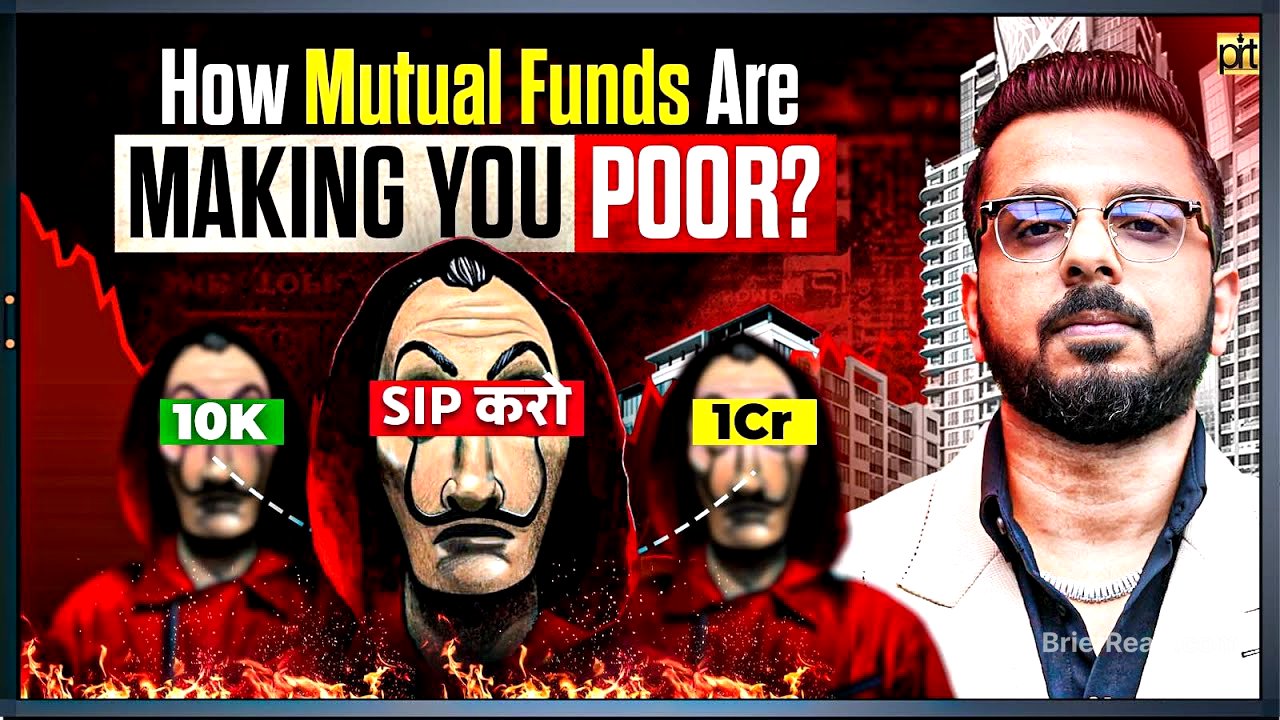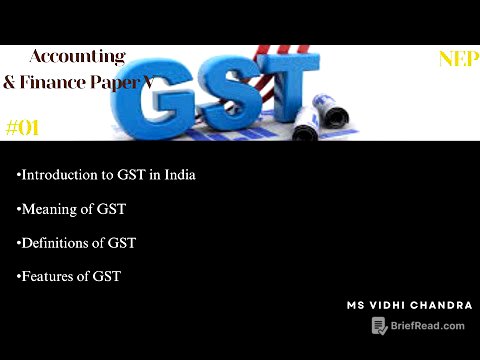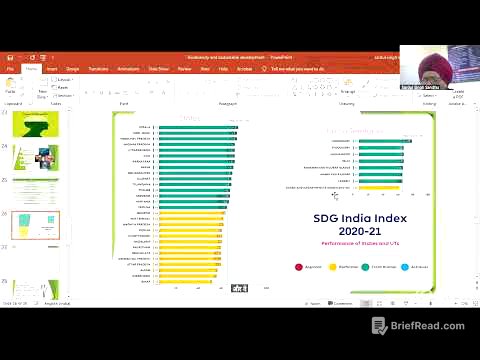TLDR;
This video exposes how mutual funds generate revenue from investors through expense ratios and exit loads, which can significantly reduce returns over time. It highlights the differences between mutual funds and ETFs (Exchange Traded Funds), advocating for ETFs due to their lower expense ratios and the absence of exit loads. The video also explains how mutual fund distributors earn commissions, further impacting investor returns, and concludes with a practical demonstration of how to start a SIP (Systematic Investment Plan) in ETFs through a Demat account.
- Mutual funds deduct expense ratios and exit loads, reducing investor returns.
- ETFs generally have lower expense ratios and no exit loads compared to mutual funds.
- Mutual fund distributors earn commissions from investor investments, impacting overall returns.
- SIPs can be easily started in ETFs through a Demat account, offering a cost-effective investment option.
Introduction to Mutual Funds and ETFs [0:00]
The video begins by stating that it will reveal how mutual funds profit from investors, often without their full awareness. The presenter promotes ETFs as a better alternative. An example is given comparing Motilal Oswal's Nifty India's Defence ETF and Defence Index Fund. The ETF has a tracking error of 0.27% and the index fund has a tracking error of 2.17%. The one-year return for the ETF is around 26%, while the presenter's portfolio shows returns above 40% due to a specific investment strategy that will be shared in future videos. The presenter highlights that the tracking error makes a big difference.
Tracking Error and Expense Ratios [0:59]
The presenter emphasizes the significant difference in returns between ETFs and mutual funds due to tracking errors and expense ratios. The expense ratio for the ETF is 0.41%, while the mutual fund's expense ratio is 0.42%, but the returns are significantly different. Additionally, ETFs do not have exit loads, unlike mutual funds. The presenter clarifies that while the index fund was launched in July and the ETF in August, leading to some price adjustments, the core issue remains the impact of tracking error on returns.
How Mutual Funds Make Money [4:12]
The presenter explains how mutual funds deduct expense ratios annually from investments, even after the initial investment. For example, on an investment of ₹1 crore, a 1% expense ratio results in a ₹1 lakh deduction each year. While ETFs also have expense ratios, they are generally lower. Nifty index funds have an expense ratio of about 0.2%, while similar ETFs have even lower ratios, around 0.04%. This difference can significantly impact long-term returns.
The Impact of Expense Ratios on Long-Term Investments [6:33]
The presenter illustrates the long-term impact of expense ratios. On a ₹1 crore investment with a 1% expense ratio, ₹1 lakh is deducted annually. This deduction is often invisible as it is adjusted within the NAV (Net Asset Value). The presenter argues that mutual funds are more profitable for companies due to these higher expense ratios, which is why they are heavily advertised compared to ETFs.
Commissions for Mutual Fund Distributors [8:50]
The presenter, a certified mutual fund distributor, explains how distributors earn commissions. If a distributor brings in ₹1 crore per month in SIP investments, they might receive a 1% commission, amounting to ₹12 lakh annually. As the AUM (Assets Under Management) grows, the commission increases, creating a continuous income stream for the distributor at the expense of the investor's returns.
The Impact of Expense Ratios on Large Holdings [12:24]
The presenter emphasizes that mutual funds and distributors earn from investors' money, and this earning continues as long as the investment is held. For instance, on a ₹50 crore holding in mutual funds, a 1% expense ratio results in a ₹50 lakh deduction annually, which is adjusted within the NAV, making it less noticeable to the investor. This deduction occurs daily, affecting the NAV and reducing overall returns.
ETFs vs. Stocks and the Myth of Exit Loads [14:28]
The presenter addresses the question of why invest in ETFs instead of individual stocks, highlighting the diversification benefits of ETFs. He also debunks the myth that exit loads only apply for the first year of investment in mutual funds, clarifying that they can be charged even after multiple years. Using an example of a ₹500 monthly SIP for 25 years with a 12% market return, the presenter shows that a 1% expense ratio can result in a difference of ₹1.5 crore in returns, advocating for ETFs to save on these costs.
Active Funds vs. Index Funds and ETF Superiority [17:26]
The presenter discusses the debate between active and index funds, noting that most actively managed funds fail to outperform index funds. He argues that selecting a mutual fund that will outperform the market from over 1400 options is challenging. The presenter reinforces the idea that ETFs are a better choice, and the next video will cover which ETFs are the best.
How to Start a SIP in ETFs [18:59]
The presenter provides a step-by-step guide on how to start a SIP in ETFs through a Demat account. By switching to investor mode, selecting the desired ETF (e.g., Nifty Twenty), and choosing the SIP option, investors can set up weekly or monthly investments. The presenter demonstrates how to customize the amount and frequency of the SIP, emphasizing the ease of investing in ETFs.
Conclusion and Call to Action [20:44]
The presenter acknowledges that the video's content may be unfavorable to those whose income is linked to mutual funds. He reiterates that ETFs are simply cheaper mutual funds that can save investors money. The presenter encourages viewers to open a Demat account using the link in the description to invest in ETFs or stocks. The video concludes by promising future content on new ETFs and strategies for achieving higher returns, urging viewers to subscribe and share the video to help others save money.









